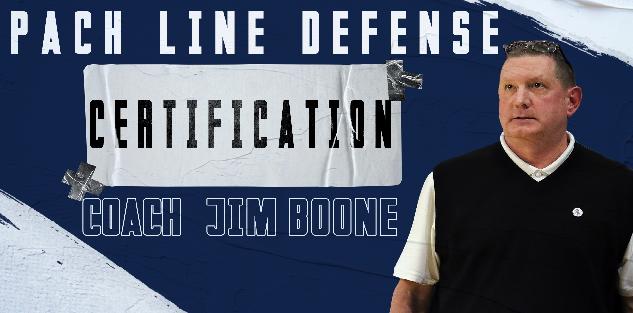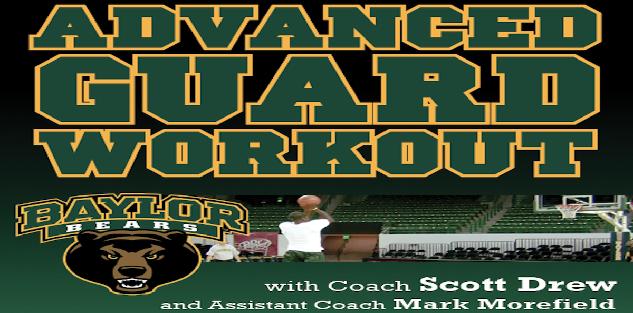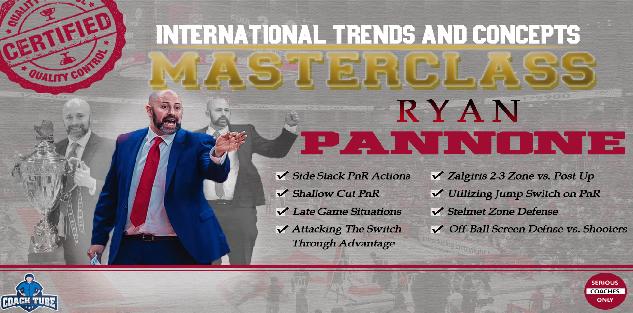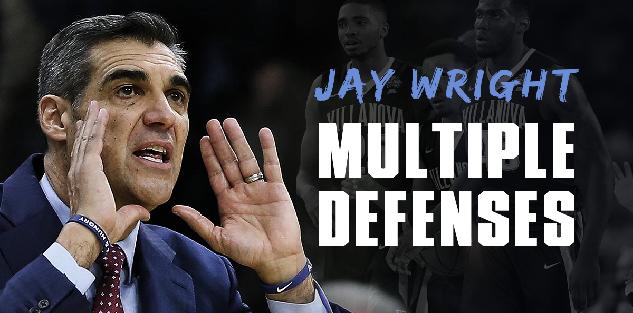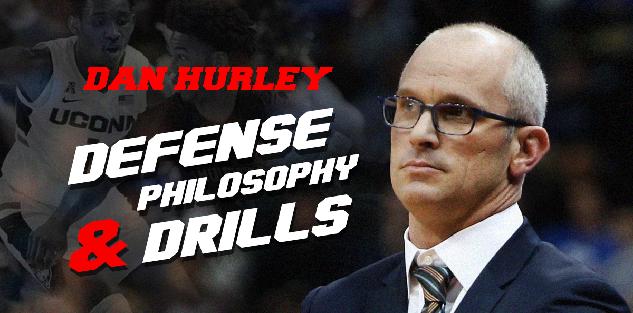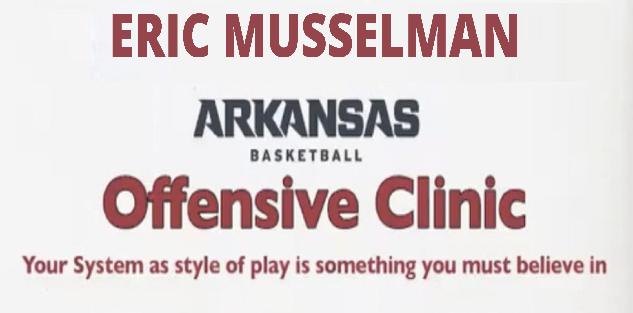Featured courses
- Two Great Game Situational Workouts For the Basketball Offseason by Grant Young
- Two Reads Basketball Players Must Understand Before Executing the Ball-Screen by Grant Young
- Two of LSU Coach Kim Mulkey’s Game-Winning Inbounds Plays by Grant Young
- Three Effective Early-Season Defensive Basketball Drills by Grant Young
- Four Essential Tips For Basketball’s 1-3-1 Zone Defense by Grant Young
- Four Zone Defense Drills to Strengthen Your Team by Grant Young
- How to Beat the Three Most Common Pick and Roll Coverages by Grant Young
- Two Drills to Improve Shooting at the Start of the Basketball Season by Grant Young
- Core Basketball Principles That Dallas Mavericks Coach Sean Sweeney Teaches by Grant Young
- Three Competitive Shooting Drills For Your Basketball Team by Grant Young
- How To Teach The ‘I’ Generation of Basketball Players by Grant Young
- Three Elite Drills to Begin a Basketball Practice With by Grant Young
- How to Build a Championship-Winning Basketball Team Culture by Grant Young
- Two of Texas Women’s Basketball Coach Vic Schaefer’s Tips For Team Culture by Grant Young
- Atlanta Dream WNBA Coach Brandi Poole’s Four Sets for Secondary Offense by Grant Young
- NC State Basketball Coach Brett Nelson’s 4 Crucial Point Guard Qualities by Grant Young
- Kentucky Coach Mark Pope’s Five Guard Rules For Offense by Grant Young
- McNeese State Basketball Coach Will Wade’s 4 Core Pillars by Grant Young
- 4 Tips To Instantly Improve Your Free Throw Shooting by Tyler Linderman
- Assemble a Championship-Caliber Basketball Rotation by Brandon Ogle
- Two of UConn Coach Dan Hurley’s Key Defensive Drills by Grant Young
- Four Post Moves All Basketball Forwards Should Have In Their Bag by Grant Young
- Four of Baylor Coach Nicki Collen’s Midseason Pick and Roll Adjustments by Grant Young
- WNBA Legend Sue Bird’s Two Tips For Attacking on Offense by Grant Young
- Houston Coach Kelvin Sampson’s Three Keys for Building a Basketball Program by Grant Young
- Two of Tom Izzo’s Top Michigan State Defensive Drills by Grant Young
- Four of Olympic Gold Medalist Coach Mechelle Freeman’s Relay Race Strategies by Grant Young
- Three Key Strategies Will Wade Uses to Build a Dominant Team by William Markey
- Five UConn Huskies Men’s Basketball Plays That You Can Use by Grant Young
- Three Tips for Maintaining Team Culture at the End of a Basketball Season by Grant Young
- Three Dribble Drive Motion Drills to Teach Your Basketball Team by Grant Young
- Three Dribbling Drills For Non-Primary Ball Handlers by Grant Young
- Four Advanced Ball Handling Drills For Basketball Guards by Grant Young
- Three Tips to Sharpen Your Post Player’s Footwork in Basketball by Grant Young
- These Three Pick and Roll Drills Are Crucial For Any Ball Screen Offense by Grant Young
- Three Closeout Drills to Improve Basketball Shooting Defense by Grant Young
- Three Tips to Perfect the Packline Defense in Basketball by Grant Young
- Four Keys to Executing the Read and React Offense in Basketball by Grant Young
- Three Tips to Develop Elite Basketball Shooters by Grant Young
- Three Crucial Keys to Executing the 5 Out Offense in Basketball by Grant Young
- These Three Offensive Sets Will Help You Beat Any Zone Defense by Grant Young
- Three Transition Basketball Drills To Play With More Pace by Grant Young
- Three 5 Out Offense Drills Any Basketball Coach Can Use by Grant Young
- Four Vital Techniques for a Motion Offense in Basketball by Grant Young
- Three Baseline Inbounds Plays To Win Your Basketball Team Games by Grant Young
- Four Drills For Sharpening the European Ball Screen Offense by Grant Young
- Three Positioning Tricks For a Basketball Zone Offense by Grant Young
- Three Rules to Perfecting Basketball's Lock Left Defensive System by Grant Young
- UCLA WBB Coach Cori Close’s Two Keys to Winning the Mental Game by Grant Young
- Four of Alabama Coach Nate Oats’ Favorite Basketball Drills by Grant Young
- Three Ways To Turn Transition Offense in Basketball Into Points by Grant Young
- Three Drills to Master Basketball's Pack Line Defense by Grant Young
- Three Transition Defense Drills to Halt Fast Breaks by Grant Young
- Four Offensive Rebounding Drills to Win Second Possessions by Grant Young
- 4 Defensive Technique Drills from Boston Celtics Assistant Coach Brandon Bailey by Marek Hulva
- 5 Drills to Improve Ball Handling by Tyler Linderman
- 13 FUNNY BASKETBALL GIFS by Alex
- BASKETBALL SPEED AND AGILITY: 8 QUESTIONS FOR COACHTUBE EXPERT RICH STONER by Jaycob Ammerman
- Defensive Strategies for Basketball by Ryan Brennan
- 4 Keys To Turning Your Program Into Championship Contender By Dallas Mavericks Coach Sean Sweeney by Marek Hulva
- 5 Components to Creating a Winning Basketball Program by Justin Tran
- Guide to Becoming a Lethal Scorer in Basketball by Justin Tran
- Zone Defense In the NBA Eastern Conference Finals by James Locke
- Mastering Court Mobility: Tips for Effective Movement in Basketball by Justin Tran
- 5 Basketball Shooting Drills: How to Develop a Sharpshooter by James Locke
- 6 Points of Emphasis for a Successful 5 Out Offense by Jaycob Ammerman
- Effective and Efficient Methods to Practice During the Basketball Season by Justin Tran
- Three Great Passing Drills From a Basketball Coaching Legend by Grant Young
- 7 Principles For Perfecting the Princeton Offense in Basketball by Grant Young
- How to Replicate A Modern NBA Offense by Grant Young
- Three Great Two-Ball Dribbling Drills For Basketball Development by Grant Young
- Two Rebounding Drills to Win Your Basketball Team Championships by Grant Young
- How to Improve Your Basketball Team’s Defense With the Shell Drill by Grant Young
- How Baylor Basketball’s Scott Drew Develops Elite Guard Play by Grant Young
- Off-Ball Movement Tips and Strategies: Lessons From the NBA Finals by James Locke
- Player Development: Scott Drew’s Tips for Producing NBA Guards by James Locke
- How to Execute a Spread Offense in Basketball by Grant Young
- Four Quality Quotes From Four Final Four Coaches by Grant Young
- A Guide to the Pack Line Defense by Alex Martinez
- 3 Defensive Build Up Drills to Improve Team Basketball Defense by Grant Young
- Battle of Two Great Coaches: Best Plays from the NBA Finals Contenders by Justin Tran
- 10 Creative Ways Athletic Programs Can Use a Video Board to Raise Money by Coach Williams
- How to Use 3 on 3 to Improve Your Basketball Team by Grant Young
- How to Defend the Pick and Roll by Grant Young
- Mastering Basketball Defense: Techniques, Drills, and Strategies for Success by Justin Tran
- Three Tips From The Coach Who Developed Giannis Antetokoumnpo by Grant Young
- 2023 NBA Draft: Skills and Technique from Top Prospects by Justin Tran
- From College to the Pros: Transitioning the Dribble Drive Offense by Justin Tran
- Positionless Basketball: Redefining Roles on the Court by Justin Tran
- Revolutionize Your Offense: Proven Concepts to Elevate Your Basketball Game by Justin Tran
- 5 Essential Fastbreak Drills Every Basketball Coach Should Know by James Locke
- How to Run a Circle Offense in Basketball by Grant Young
- Game-Changing Strategies: ATO Plays in the EuroLeague and Olympics by Justin Tran
- How to Stand Out at Basketball Tryouts by Grant Young
- How to Improve Your Basketball Team’s Transition Defense by Grant Young
- Indiana Fever GM Lin Dunn’s Two Keys For Women’s Basketball Coaches by Grant Young
- Strength Training Strategies Every Basketball Player Should Have by Grant Young
- A WNBA Basketball Coach’s Four Priorities In Transition Defense by Grant Young
- Three Adjustments to Make When Your Basketball Offense Isn’t Working by Grant Young
- Three Pillars to Applying Defensive Pressure on the Basketball Court by Grant Young
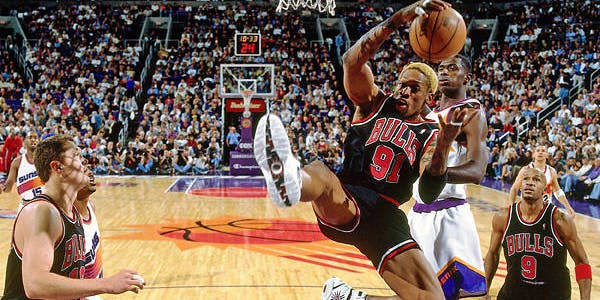
Two Rebounding Drills to Win Your Basketball Team Championships
- By Grant Young
Not Rebounding? Not winning. It's that simple.
History shows that teams who can consistently perform well on the glass have better chances of winning and a higher win average. It’s no surprise that rebounding is one of the most important aspects when it comes to winning basketball games. There are three ways rebounding can impact your result.
A team's offensive rebounding ability gives them possession of the basketball, giving them a second opportunity to score. Each possession helps both the offense and the defense, as opposing teams become frustrated. As an offensive player, rebounding allows your team to score more points and potentially go back to the free-throw line. Every coach loves a monster on the glass.
And a good defense relies on defensive rebounding, which limits the offense to a single shot. When the game is closing down and it matters most, rebounding on the defensive end can seal the win for your team. Defensively you can put an end to any potential momentum the opposing team could gain from retrieving their free throw. As we know, momentum can change the course of the game very quickly.
Rebounding is a noble skill that demands persistence to understand and master. If executed properly, rebounding can (and will) help you to gain vital positioning under the rim, allowing you to out-rebound taller and stronger opponents effortlessly. And Jamy Bechler has the perfect basketball rebounding drills to improve your team’s skillset beneath the basket.
Jamy Bechler had worked with teams ranging from the NBA to the Big Ten to the high school ranks. Before he became one of the top experts in the field of team leadership and the author of The Leadership Playbook: Become Your Team's Most Valuable Leader, Bechler was a successful college basketball coach and high school athletic director. As the Director of Athletics at Marion High School in Indiana, he oversaw the Marion Giants winning their 8th boys' basketball State Championship.
In his ‘Championship Rebounding’ course, Coach Bechler shares how his teams have achieved tremendous rebound success with the philosophies and practices he shares. He explains how to improve your rebounding offensively, defensively, and at the free-throw line by developing a toughness ethic. Learn how to make your players constantly compete at their best by developing an aggressive mentality in them.
Gaining an Edge
Before getting into the specific drills he uses to improve a team’s rebounding, Coach Bechler discusses the mentality that comes with prioritizing rebounds — and why adopting that alone will help your team win championships.
“Rebounding can be a great neutralizer. It can give a team an edge,” Coach Bechler said. He also adds that rebounding is a skill that anybody can master and that you don’t have to be overly athletic or tall to be a great rebounder. But what you do need is a lot of heart and willpower.
He also adds that a coach and team emphasizing rebounding leads to a mentality of toughness and aggressiveness, which are great traits for any team to employ.
Coach Bechler says that the best statistic used to track individual rebounding is rebounds per minute played. With this, he believes 1 rebound every 4 minutes of playing time makes for a good rebounder. A good offensive rebounder is going to grab an offensive rebound every 10 minutes of playing time.
When cultivating a good rebounding team, it’s important to emphasize the importance of rebounding day in and day out. It has to be an aspect of every practice, and every drill should incorporate some rebounding into it.
Halfcourt Hustle
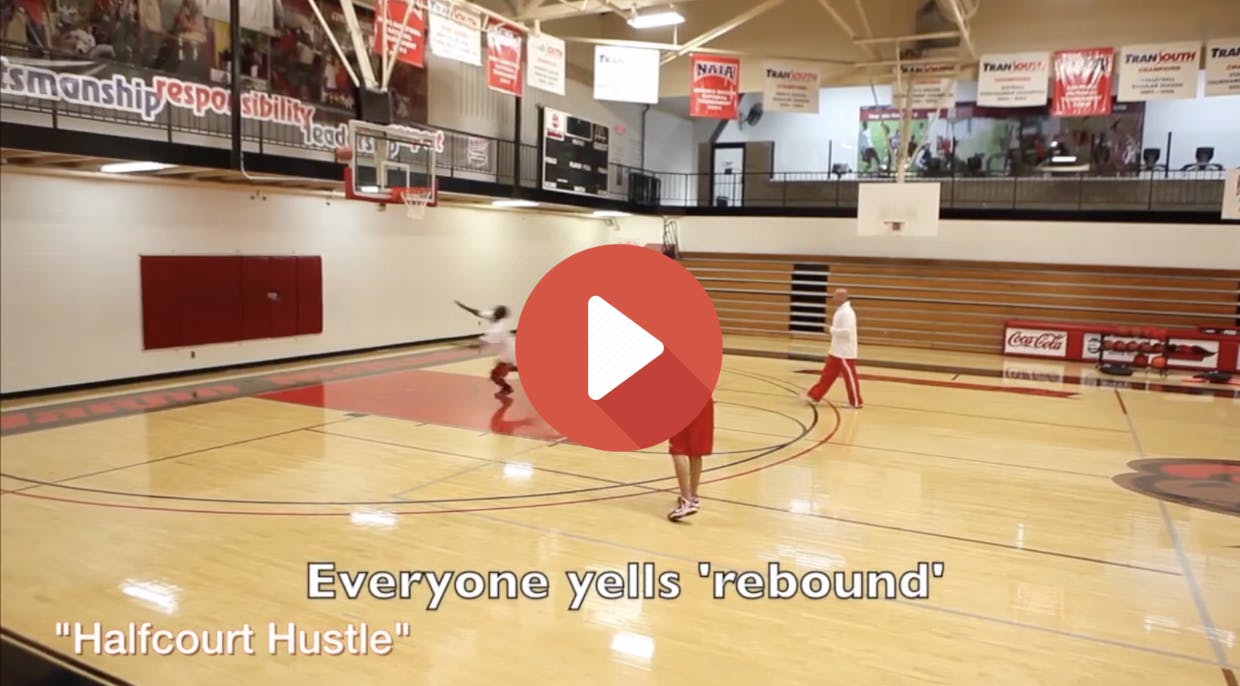
One of Coach Bechler’s favorite offensive rebounding drills is what he calls the Halfcourt Hustle drill.
This drill starts with one player positioned along the wing or the top of the key with a ball in their hands, while the team’s primary offensive rebounders are positioned at halfcourt. From there, the rebounder at the front of the line will wait until the player on the wing takes their three-point shot. Once they do so, the rebounder will take off from halfcourt to secure the board.
From there, the rebounder will go and get the rebound wherever it ends up and finish the play with a layup, regardless of whether the initial shot was made or missed. It’s important for all of the players waiting in line to practice yelling “Rebound!” each time a shot goes up because that’s what a bench should be doing during games.
While this drill is obviously great for reading and securing offensive rebounds and getting a put-back shot up quickly. But because it also requires hustle so that the rebound is collected before it hits the floor, this drill emphasizes playing hard and with aggression, which will benefit your team in many ways.
Hit and Get
One of Coach Bechler’s favorite defensive rebounding drills is what he calls the Hit and Get drill.
This drill will require three players standing inside the post with three of four players positioned along the three-point line, ideally holding some sort of padding. When a shot goes up, the players in the post will hit each of the bump holders with their forearm before going up and simulating grabbing a rebound.
This drill simulates blocking out offensive players when a shot goes up. Since the players along the three-point line aren’t serious threats to get the rebound, all a player needs to do is bump them and then get the rebound themself.

